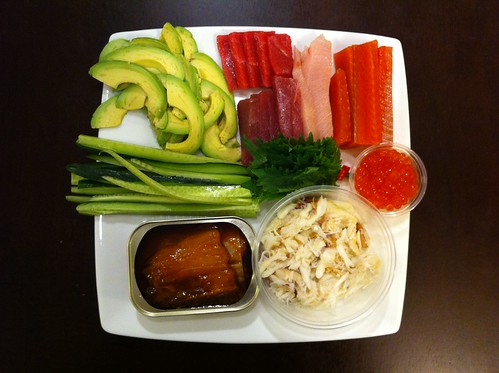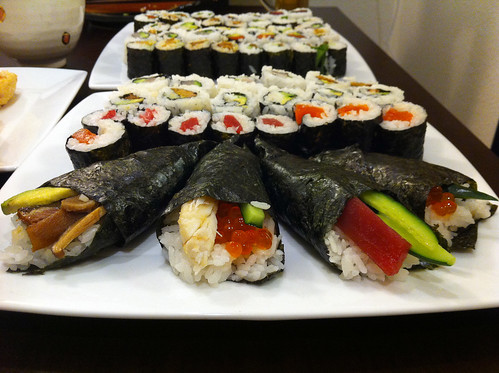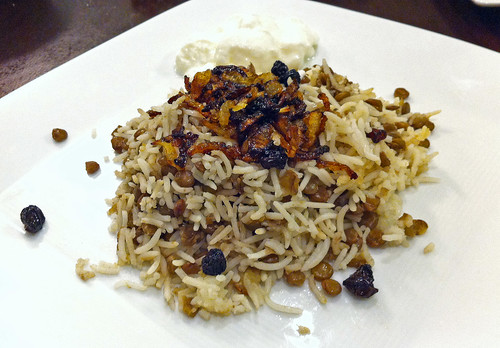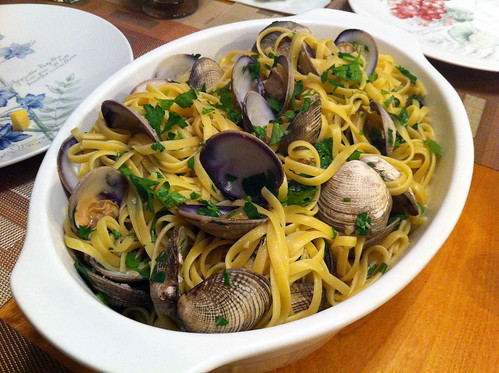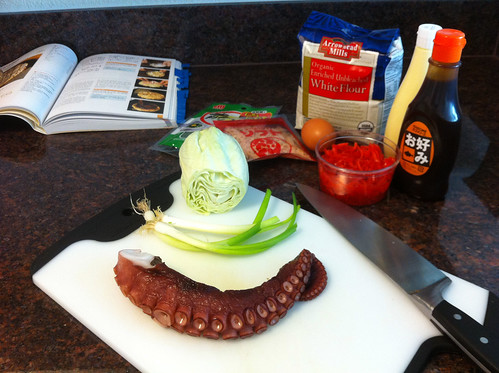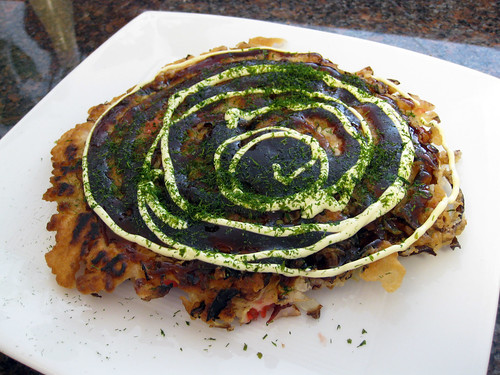I’ve just returned from a trip to Tokyo and jet lag aside, it was everything my sushi-laden dreams are made of. I’m no early riser, but I even had sushi for breakfast one morning at Tsukiji fish market. The sushi was as good as I remembered it from my last trip a few years ago, and I’ve been craving it at home since I returned.
Thankfully, good sushi is within reach at home. For me, the toughest part is making the vinegared rice. I haven’t mastered it yet but I’ll keep trying until I get it right. It’s a great excuse to eat more sushi.
Ingredients:
1 1/2 cups sushi rice
1 2/3 cups water
1 4-inch piece of kombu seaweed
1/4 cup rice vinegar
2 tablespoons sugar
1/2 teaspoon salt
10 to 15 toasted nori seaweed sheets
any assortment of the following filling ingredients: sliced sashimi-grade tuna, sliced sashimi-grade salmon, salmon roe, sea urchin, crab, barbecued eel, egg omelet, shiso leaves, takuan pickled daikon radish, sesame seeds, sliced cucumber, sliced avocado, green onions, soy-simmered shiitake mushrooms, umeboshi plums, soy-simmered kampyo gourd strips, cooked spinach
1. Make the vinegared rice: soak the kombu seaweed in the water for about one hour to make the stock. Wash the rice 30 minutes prior to cooking and drain on a sieve. Put the vinegar, sugar, and salt in a small pot and heat slightly until dissolved. This completes the vinegar dressing. Place the rice and stock into a rice cooker and cook according to cooker instructions. Transfer the rice to a large bowl and sprinkle with the vinegar dressing. Using a flat wooden spoon, toss the rice with horizontal cutting strokes while cooling the rice with a hand-fan. When tossing is completed, cover the rice with a clean cloth moistened with water.
2. Place a nori seaweed sheet on a maki-su bamboo mat. Put the vinegared rice lightly on the nori sheet and spread over the sheet, leaving 3/4-inch at the top and bottom uncovered.
3. Place filling ingredients of your choice horizontally on top of the rice.
4. Lift the edges of both the bamboo mat and nori sheet nearest you and bring over to meet the far edge of the sheet.
5. Gently but firmly press the bamboo mat around the roll to shape it. Push both ends of the rolls towards the center firmly a few times using a cloth or plastic wrap.
6. Cut in sixths or eighths crosswise. Clean the knife with water between cuttings. Serve with soy sauce, wasabi, and pickled ginger.

